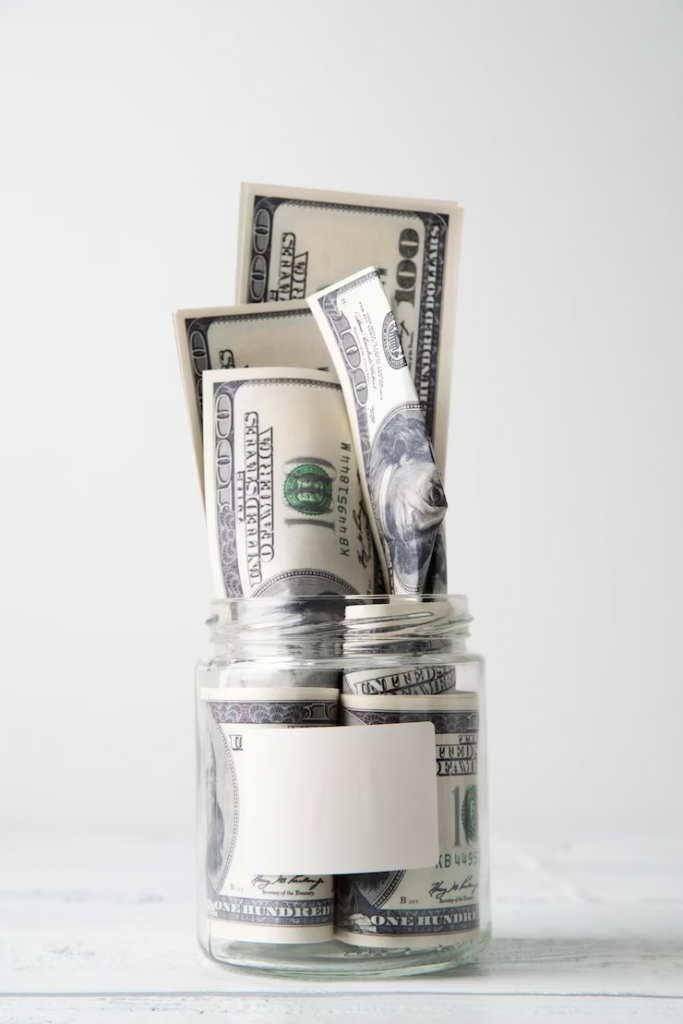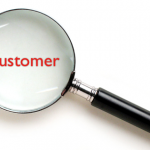Creating Monthly Recurring Revenue (MRR) In Your Business Is Critical, But Is A Subscription Plan The Best Route? It Depends & Here’s Why…
The other day I drove up to my local car wash and my outlook on one of the most popular money-making tools in business – Subscription Plans – and how businesses can create monthly recurring revenue was changed forever.
That’s a very bold but true statement and I know my personal revelation can help your business continue realizing the benefits of monthly recurring revenue (aka Continuity), without having to rely on or force customers into a subscription plan.
Especially since:
1.) Using a straight subscription plan is almost certainly leaving a lot of your potential revenue on the table.
2.) With subscription plans being poorly implemented in almost every business today, consumers are growing tired of this model and you need to be armed with alternatives for creating Continuity going forward.
[For the purposes of this article, “Continuity” is another way of saying recurring revenue.]
The Car Wash Of Destiny
On that note, all I needed was a quick wash. Instead what I got was a life lesson. Here’s how it unfolded…
In a rare occurrence in Arizona, it rained the other weekend. All weekend. It was glorious. In Arizona, it rains so little that when it does, folks here hunker down in their houses to enjoy a weekend on the couch watching movies and feeling guiltless for not being outside.

Then, the next Monday morning the skies cleared and it was back to sunshine and business as usual, and I needed a car wash. Why? The obvious reasons aside, later that weekend my wife and I were going to trade in our car for a bigger one that could accommodate our growing family. We’re having twins, so a 3rd row of seats was a must for my wife, our son, and the little ones on the way.
I only mention this trade-in to frame what I was thinking driving up to the wash. I didn’t need anything fancy from the wash, just a quick outside rinse and a vacuum inside to get it trade-in-ready.
Ironically, when I was a kid, washing the car was usually a half day event with my dad and sister. Wash, chamois (pronounced, “shammy” for us Americans) dry, wax, vacuum, armor-all wipe down, detail it. Spotless! Now I love paying someone a few bucks to do it for me in few minutes.
As I drove up I noticed it was the proprietor of the car wash, Jon, working the entrance today. He and I had interacted before, and he’s a really nice guy, so I was looking forward to a quick hello and to be on my way.
Instead, our interaction changed my viewpoint on subscription plans forever…

[Author’s note: Isn’t it interesting how some random event can have such a profound impact on your worldview? Like when your first kid is born, or you make love for the first time? Nothing is ever the same after these common, but life-altering experiences. Anyway…]
As I was handing Jon my credit card to pay for the $5 wash, he said, “For $10 you can get unlimited washes for the next 30 days. Want to do that instead?”
It seemed like a no-brainer offer at the time so I said, “Sure, let’s do it.”
Just like that, he was able to increase my order value by 100%, doubling his revenue!
In marketing and business, that’s a seemingly impossible feat, yet here Jon was doing the impossible.
The conversation didn’t stop there though, as the real “deal” was about to be exposed…
Before running my credit card, Jon turned to me again and added, “Then, it’s only $20 after that. Is that still ok?”
“Wait, what? $20 for what?”
“$20 a month after that for unlimited car washes.” he returned.
“Do you offer detailing?” I asked.
“No, just the top notch car washes.”
“What about wheel cleaning?”
“No, only what the machine is able to reach gets cleaned.”
“I’m actually trading this car in this weekend so that doesn’t seem like something I’m interested in right now.” I said.
“Ok, we could transfer the plan to the new car.” he chimed back.
“No thanks, just the $5 wash today please.”
I got my card back, rolled up my window, drove forward until my wheel locked into the auto-wash track, put my car in neutral, and my brain went into overdrive.
What the heck just happened?!
Why Subscription Plans Aren’t Right For Every Business
Here’s what happened… I live in Phoenix, AZ. On average, that means we have 360 days/year of sunshine. In any given month, we have about 3-0 days of rain. Yes, there are entire months without rain here.
Moreover, since those 3 days of rain typically happen all in a row, the idea that I’m going to need multiple car washes in a single month to warrant paying a monthly subscription fee at the local wash is absurd.
Here’s an actual graph of rainy days in Arizona, and this is standard across decades of data…

Seriously, it doesn’t really rain here, and car washes are at the bottom of my, “Things I care enough To-do” list these days.
On top of living in bone-dry Arizona, my wife and I also both work from home. This means that even on some rainy days we may not even leave the house. Most Arizonans don’t actually leave their house on rainy days.
Rainy days here are the same as when an 8-foot snow storm blankets the Northeast and collectively everyone says to themselves, “Maybe it’s best we stay home and binge our favorite streaming shows, right?” (We’ll get to streaming TV services.)
In other words, on most rainy days, our car is tucked away nicely in the garage staying clean and dry.
I’d like to note here that I don’t expect Jon to know my driving habits either. However, he does know how dry it is here, and how infrequent car washes are needed.
So why would the local car wash want to try and sell me on something I clearly don’t want, need, or even care about?
The simple answer is – Profit. Not revenue, pure profit.
If I never get my car washed, but pay for car washes anyway, that’s pure profit, and I commend Jon for trying to make that sale as a pure Capitalist.
However, it’s not the right offer for his target audience, and he’s leaving money on the table because he’s trying to force the wrong Continuity plan in his business.
Capitalism Is All About Uplifting The World
I’m 100% a Capitalist thru and thru. Capitalism, with a capital C, holds the power to change the world. It’s businesses run by good humans who care, not governments, that change the world. I’ve heard Russell Brunson say similar things onstage and I can’t agree with him more as I’ve witnessed this happen throughout my life.

With that in mind, we need more folks like Jon who are willing to risk it all and build a business that provides real value to the real world.
Seriously, think about it. If I can give Jon $5 to have my car washed in seconds, a task that used to take my Dad, sister, and me an entire afternoon, then that’s providing me an enormous amount of value, dollar-for-dollar.
However, the idea of locking me into paying for a service I will absolutely NOT need on a regular basis is where you’ve lost me as a consumer...and as a fellow business owner…
…and that…that point right there is why Subscription Plans are dying faster than the fastest dying animal on the endangered species list, the “Asian Unicorn”, also known as the Saola.
Sunscreen Subscriptions In Seattle? Really?
Let’s shift gears and take a different approach to this same concept of when and where a subscription plan works, and when it doesn’t.
Here’s the same rain graph for Seattle, Washington.

Kind of a little different graph for that of Phoenix, right?
Think a subscription plan for a car wash might work in Seattle? Maybe, maybe not.
That would depend on how “clean” you want your car to be while driving around knowing that tomorrow it’s probably going to rain again anyways.
Seriously, look at that graph for October – January. It rains more than it doesn’t! What would be the point of washing your car 15 times a month? Sure, the car would be clean on the good days, but it also wouldn’t have any paint after a while either.
Car washes aside, what if you were selling sunscreen in Seattle? Those magical tubes and spray bottles of the stuff that keeps our faces from peeling off in the middle of summer?
If I were a betting man, I’d venture a guess that if you were to walk up to anyone at a Whole Foods in Seattle and offered them a $20/mo subscription to your sunscreen product, they’d laugh in your face.

Why? Because again, the idea of paying a monthly fee for something you don’t want, need, or even care about is absurd.
Fly a couple thousand miles Southwest to Hawaii though, and the idea of offering a simple monthly subscription plan to the, “Revolutionary reef-safe, fish-feeding, and skin-healing sunscreen” you just created for the surfing community would be a billion-dollar deal.
[No joke, if you can create that product, please contact me. We’ll make millions together.]
Subscription Plans Aren’t Dead, Just Overused
Ok, so at the beginning of this article I said, “Subscription Plans Are Played Out…”. That’s not to say they’re dead. I don’t think they are.
However, they’re overused, played out, and a major pain in the you-know-what for consumers, and will become about as popular in the late 2020’s as a layaway plan at K-Mart is right now (IMHO).
As I just laid out in the Hawaii example, there is a time and place to use a subscription plan. All the same, as I laid out in the Seattle sunscreen example, there is a time and place they absolutely shouldn’t even be considered, let alone used.
So how do you know when to use a subscription plan and when to use an alternative?
That’s easy. Just ask yourself this one question, “Does my product/service create an ongoing increase in value for my customers in between every single payment they make?”
Yes? Great, build a subscription plan model and get to work (but finish reading this article first).
No? Try implementing a subscription plan and not only will your customers inevitably leave (rightfully so), but they’ll never return, and most likely talk smack about you to their friends and others online.

The Inherent Flaws of Subscription Plans
Even if you answered “Yes” to the question above, keep reading. You may stumble on some new recurring revenue opportunities hiding inside your current business model.
If you answered “No” then definitely keep reading to ensure you are able to keep your doors open next year.
It’s no secret that to keep any business running it’s imperative to create steady, regular, predictable cashflow so you can pay the bills and grow the organization. This is why subscription plans have been around since the dawn of business and are so attractive to most entrepreneurs.
Cashflow for Governments comes in the form of “Taxes”.
Cashflow for businesses comes in the form of “Continuity”.

Either way, the goal is the same: Keep money flowing in, so money can keep flowing out to pay for the things we want.
Pretty simple, right?
In more recent years, many organizations have seen the incredible success that streaming services like Netflix and Disney+ have had with their simple subscription model and wanted in on the cash cow action.
Here’s the very simple model Netflix and Disney+ follow: Put out tons of great content, charge a monthly fee to access it, and Bob’s your uncle, the money comes pouring in.
Genius, right? Not exactly.
Yes, Netflix disrupted an industry that was plagued with so many issues, and helped millions of folks “Cut the Cord” in recent years, but even their business model is starting to crack at the seams.
In a now infamous tweet that aged like a jug of milk out on a rock in the middle of the Arizona summer heat, Netflix gave us this little gem back in 2017…

The tweet was a bid to get more people watching on their platform at all cost…
Get more people hooked on what the platform had to offer, encourage more new subscriptions, and new revenue would keep pouring in, right? Hmmmm…fast forward 6 years and…
The New Netflix Isn’t So Friendly

In other words, Netflix went from saying,
“Share your password with the world” to…
“Share your password and we’ll shut you down”. Dang! Harsh.
What went so wrong at Netflix that it’s caused them to do a complete 180 and turn on the very people they were ushering into their subscription wonderland?
My personal opinion? They were blinded and blindsided by the subscription plan model while missing it’s inherent shortcomings.
Think of it like this, when Netflix spends $100 Million on producing the most amazing new series that becomes a worldwide sensation, they will inevitably get more new (temporary) eyeballs to their platform. That’s kind of a given.
Since Netflix charges about $20/mo right now, they’d need 5,000,000 new subscribers to just break even on their original $100M investment, assuming the program lasts one month.
Now, not only does Netflix needs 5 million new subscribers to pay themselves back, but they also need those new customers to stay on the platform after consuming the content for Netflix to turn a profit.

In other words, if Netflix doesn’t bring on at least 5 million new subscribers to pay the $100M back, and get most of those folks to stay, they’ve lost money on the deal. Game over.
That’s not a sustainable business model, as they have to continue spending huge sums of money to create new productions, hoping folks subscribe, don’t cancel, rinse and repeat.
Effectively, Netflix is putting itself out of business every time their newest hit “whatever” runs its course.
Why am I not including existing customers who are already paying for Netflix in this calculation? Because Netflix already had their money, and used it to finance the initial $100M cost for the new series, right? Plus, those folks are getting the content no matter what.
Netflix needs to constantly spend massive sums to create new content to bring on new customers, then use that money to create new content and bring on new customers. It’s a vicious, unsustainable model.
This massive spending on original content is not an uncommon practice at Netflix, or any of the streaming services either. Netflix paid Harry and Megan Markle $135M to produce various titles for the next 5 years.
In 2022 alone, Netflix actually spent over $16 Billion producing original content to bring in new eyeballs and hopefully keep them. However, as we know from recent reports, Netflix isn’t keeping them. Their subscriber count went down for the first time recently and with all of the competition in the space now, their subscriber count will undoubtedly continue to fluctuate. Not good for shareholders, not good for business.
Once folks have binged their favorite series, documentary, movie, and whatever the latest content is, there’s absolutely nothing keeping them from jumping ship to another streaming platform.
(Nothing except when the next Tiger King takes the world by storm again. Stupid Carol Baskin.)
Subscription Plan Alternatives For Continuity
Ok, so what can your organization do to create recurring revenue (Continuity) without simply throwing a subscription plan out there? Simple – G3t Cr3@tiv3!
(That’s Get Creative! in nerd speak. HA!)
For example, take the proposed subscription plan for the car wash that started this whole conversation. Had Jon offered me a digital “punch card” for washes that auto renewed after ever 5 washes, I may have taken him up on that offer.
I get what seems like “unlimited” washes that I never have pull my card out again for, plus I’m given a major incentive to use Jon’s car wash exclusively, and after every 5 washes, Jon receives new, recurring cash flow. Win-win.
Here are some other alternatives to the straight subscription model…Let’s Get Creative!

Premium, Early Access Add-ons
Premium, or Early Access plans allow customers to get a sneak peek at what’s new with your organization, and, if you do it right, gives them the chance to give feedback on how to make a new product/service even better.
Customer feedback, both good and bad is highly overlooked in business. Highly overlooked, and if you want to learn how to leverage customer feedback to 10X your business, check out this post next.
Everyone loves to hear what they’re doing right, but if you focus on fixing what folks are telling you is wrong, or needs updating/enhancing, there’s a treasure trove of potential revenue waiting for you.
Moreover, by offering clients “Premium” or “Early” access, along with the chance to give their honest feedback on the product/service before it’s fully released, you give customers total buy-in to your company. When customers have total buy-in, they start doing crazy things to help your company succeed, including becoming walking, breathing, living billboards for your brand…

Disney+ is reaping the benefits of this type of plan right now, and offers a good model to follow. With every new major theatrical release, Disney+ doesn’t just drop it into everyone’s account on “opening day”. Instead, they give those willing to pay a premium the chance to watch the video exclusively for 30-days before everyone else.
Those elite customers then head to websites like Rotten Tomatoes, iMDB, and social media to review the film. If the flick is good, those rave reviews will entice others to pay the premium and Disney+ will sometimes have the film payed for before it’s ever released to the general public.
When was the last time you released a new product/service that had a 100% ROI before it was made public?
This one minor tweak to their existing subscription model has made Disney+ hundreds of millions in additional revenue. That’s in stark contrast to Netflix who is now looking to sink so low as to offering a “cheaper, but with ads” plan. That’s stupid.
Netflix seems to be working harder to find new ways of pissing off their customers, rather than simply getting creative with their business model. I know of another company that acted that way. Maybe you’ve heard of them? Blockbuster. We all know how that turned out. Oh the irony.
Tiered Customer Ascension Plans
(My personal favorite)
Another alternative to an everlasting subscription plan is a tiered system that gives customers a pay-as-you-go model. Similar to the “Punch Card” I mentioned before, and the “Choose-Your-Own-Adventure” books we read as kids.
Tiered plans are an exceptional way to provide a more personalized experience for your customers (read: personalized offers = higher price points) which will entice them to stay with your organization longer because of a higher perceived value, and allow them to ascend to new heights in their career and within your program at their own pace.
Another added benefit you can use in your messaging is your clients get peace of mind when working with you because they only pay for the things they want when they need them.
When would I apply this model? It’s great for a lot of business models, but my favorite here is coaches and consultants.

Imagine you offer a fitness coaching program (I’m looking at you, Tyler) that costs $200/mo to get you “shredded” at home and keep you that way for life. $200/mo may sound like a lot of money, but go to any CrossFit or major gym with all the amenities, like a pool, tennis courts, a basketball court, etc. and you can easily spend that much or more.
Well, the simple fact of life is, not everyone wants to be “shredded”. It’s a lot of work and after a while, people will most likely tire of the constant meal prepping, gym sessions, and everything else involved. So what do you do?
Instead, what if you tiered the system to different levels of fitness and health goals? In other words, a premium fitness plan that’s built just for you.
If your clients’ goal is to simply lose 10 lbs. and lower their cholesterol, they may be willing to spend $200/mo for a few months, but once they’ve met those goals there’s nothing keeping them in your program.
Again, what can you do to keep them as a client providing recurring revenue even though you’re effectively putting yourself out of business with every successful client? Simple: Create new incentives for those clients to keep spending money with you.
Instead of charging a flat monthly fee that fire-hoses customer with everything you offer, break your content into sections that they pay for when they are interested, want, or need them. This could include having them pay for one-off workouts plans, personal consultations, meal plans, recipes, discounted supplements and workout gear, etc.
Breaking your offers out into bitesize pieces gives every client the chance to continue on in your program, but at their own pace and ideal price points. This will translate into great customer success and retention, higher profit margins, and an incentive for you to continue creating great new content and offers that new and existing customers will happily pay a premium for.

Moreover, this same model can be used in virtually any business that’s running a content marketing campaign. If you’re putting out regular, high-value blogs, podcasts, vlogs, or any other types of content, you have every right to charge happy customers a reasonable fee to access it.
No need to lock them into a subscription plan, but instead give them the freedom to spend as much (or little) as they want with you. Rest assured: Happier customer will always spend more money. Every. Single. Time.
Are you starting to see how a straight subscription plan may be holding your business back right now?
Unless you have 95% customer retention, your subscription model needs work. Why 95%, not 100%? Because companies merge, humans get new jobs, etc. Things happen where not everyone is going to need your stuff indefinitely.
Group Pricing Plans
Group pricing plans are a blending of the two previous plans we discussed. Its goal is to create a large initial bump in revenue for you, while setting the stage for two unique ways to build Continuity as your clients’ needs change.
This one is typically for businesses that sell to other businesses (B2B), but can be applied to virtually any group, and it works like this…
Let’s say you offer a product or service that businesses want their entire team to have access to. For example, a training program. While a subscription plan could work in this instance it would have the same inherent downsides we’ve seen in Netflix’s business.
Instead, a better route to serve your clients and their team would be to simply charge an upfront Premium to the business so their team can access the base level of the training program. The initial premium would also include a set number of seats or licenses for their team to access the program.

Then, as the business brings on new team members they’ll pay to add more seats for every new hire. This is the first of Continuity for your business, while ensuring you deliver a great deal for your client.
It’s important to note that in this model, licenses can’t be transferred. Mainly because you can’t extract the information from someone’s brain once they’ve consumed it, so with every new hire a new license needs to be purchased.
Finally, as your client’s team grows and their needs change they’ll also always want more fresh content from you so they can reach new levels of success. This means you’ll continually be working to create more training modules, sales materials, etc. that you can charge for. This creates almost unlimited opportunity for the second level of Continuity in your business, and delivers a true value-add solution for your clients.
Seriously, it’s a win-win-win.
Even better is, as the team members gobble up your content, if they’re given the opportunity, they’ll tell you exactly what they need next. With that feedback you can continue building new content with a built-in customer base ready, willing, and happy to pay a premium for whatever you’re selling.
Again, win-win-win!
Also, this model can almost ensure a 100% ROI directly out of the gate. WHAT?!?!?!
Subscription Plans Are Dead, Long Live Continuity!
Ok, so at the end of the day I know subscription plans aren’t dead or even really going away anytime soon. When used properly, they’re a very effective tool for generating predictable, stable, recurring revenue. They’re also a great tool for business models that require ongoing payments to maintain the products or services.
Software as a Service (SaaS) and supplements are probably the two best (and almost only) use-cases that really demand a subscription plan be used. SaaS needs constant maintenance and supplements get used on a regular basis, requiring regular refills.
Outside of those though, your customers probably don’t really need to subscribe to have their car not washed every month or their sunscreen in Seattle replenished on a regular basis.
Where does that leave us?

Well, it’s seriously time to get serious about implementing new ways your organization can create Continuity without relying on a subscription plan. Why? Because they will inevitably lead to customer attrition, reduce your true revenue potential, and may actually be costing you more than they are making you.
So start today by assessing what you’re doing for Continuity in your business today and start considering adopting one of the alternatives we discussed here. The results may surprise you.
What are your favorite subscription plan alternatives? Did we cover it here, or did I miss one (or more)?
If you want to discuss ways your business can start building Continuity today, connect with me here! I’d love to chat and see what new revenue opportunities await you and your team.
Talk soon!
Sincerely,
Thomas Buttino – Continuity Fan, Subscription Plan Skeptic
Contact us now for more FAQs and insights:
support@theautomatedexec.com



